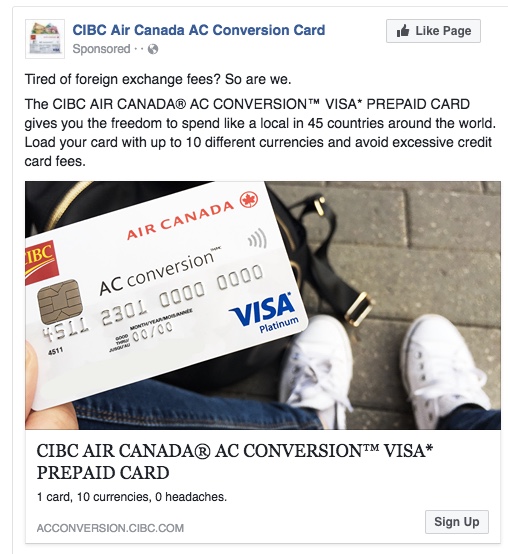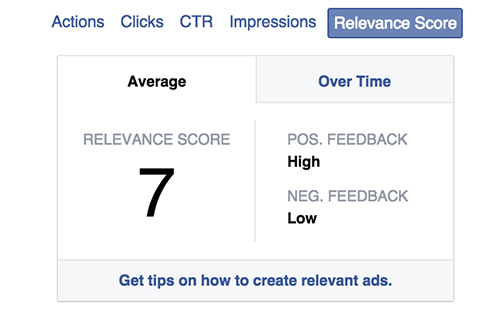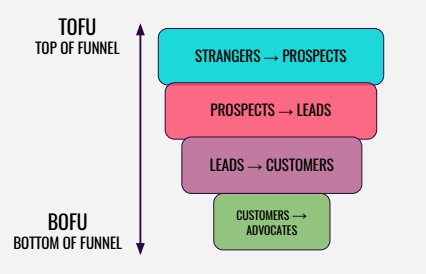Introduction
So you start running your Facebook ad campaign but engagement is low, CTR abysmal and CPA high. You’re asking yourself why? What did I do wrong?
We get it! Facebook can be an intimidating platform and people often wonder why their ads aren’t working or eliciting the results they had hoped for.
To make more effective ads we came up with the top questions you should ask yourself while running a campaign that isn’t getting you the results you want.
These questions may seem obvious but digging deeper into them will help you solve the underlying issues of a not so successful ad campaign.
Is your ad creative thumb stopping?
Your creative is a combination of your imagery, video, cinema graphs etc.
Be critical and ask yourself if the creative is something that would catch your eye if you were scrolling through a congested newsfeed. Remember your ad isn’t just competing with other ads it is also competing with a large amount of personal content that people are sharing every second. According to Facebook people scroll through 300 feet of news feed content every day!
What can you do to improve the creative to make a person’s thumb stop to look at your ad? Maybe you can make the colour brighter so that it pops more or try video instead of a static image.
Visuals are important don’t cheap out, make sure the imagery you use is high-quality. Get a subscription to a stock photo site so that you can avoid copyright infringement. Here are some additional tips for creative resources.
Beyond graphics, your ad copy is also an important part of the creative.
Is your copy telling a story from beginning to end? All of the pieces need to fit together to tell a coherent story. From the headline to the CTA, every word needs to earn its way onto your ad.
The headline should grab people’s attention and not be too long. Check out these guidelines for text lengths in Facebook ads.
Your call to action needs to convert your target customer. Is yours appropriate for the type of conversion you are trying to make? If you want sign ups, your call to action should reflect that. If you want your customer to read more and you’re not going for the hard sell then your CTA should reflect that.
If it’s an offer that you’re promoting in your ads, is it irresistible? Revise your copy to make sure whatever you are offering isn’t even a question, it should be a no brainer that the person should take action to click through to receive the offer. Free content works best depending on the stage of the funnel you’re at, but giveaways, contests etc. are awesome ways to get people on your email list.
Hire a copywriter if you don’t feel comfortable writing your own copy. It’s important that people buy into the story you are trying to sell. Remember people want emotionally triggering stories that resonate with them, not to be sold to.
Here are some solid examples of ads we created that had strong creative and performed well:

Minimal text and it follows the rule of thirds. The credit card is the focus of the image.

It’s branded, body copy is 1-2 lines, headlines is short – follows creative best practices. Plus who doesn’t like pictures of cute animals? Am I right?
How relevant are your ads?
The Facebook ad relevance score is another factor to consider. This also falls under your creative. The more relevant your ad is to your audience the higher the relevancy score.
The more likely the ad is to be served than other ads targeting the same audience.
You pay less the more relevant your ads are to your audience.
Putting weight in the relevancy score can also tell you when you need to refresh your ad set. Also, determine which ad creative best resonates with your audience.
How it works is once your ad is served over 500 times your ad received a daily relevancy score from 1-10. 10 being highly relevant and 1 being not very relevant.
Ads Manager > Campaigns > Click Ads > Relevance Score

This score is calculated based on positive feedback and negative feedback.
According to Facebook:
Positive feedback is “The number of times we expect people to take a desired action such as share or like your ad, or help you achieve your objective, such as visiting your website”.
Negative feedback is “The number of times we expect people to hide your ad or indicate a negative experience such as choosing not to see ads from you”
Ways to improve your relevancy score is by being more specific in your audience targeting, re evaluating your ad’s image and message, trying a new ad, reviewing ads and looking for patterns to see what is eliciting high relevancy scores and which aren’t.
Are your buyer personas appropriate and are you targeting properly?
To learn more about perfecting your buyer personas read this article.
One of the biggest advantages of Facebook is the audience targeting capabilities. You can target by location, demographics, behaviors, and interests.
Other advanced targeting options include custom audiences, lookalike audiences, and custom audiences specifically from your website. These audiences are based on information/email addresses you already have.
While broad audiences may show your ads to the most people, narrow audiences will help get your ad in front of the right people who are more likely to engage with it and become customers. Facebook recommends targeting to an audience over 10,000 people for your ad to perform the best.
However, testing audiences are important at the beginning. The Facebook ad platform can tell you a lot about the behaviors of your target audience. Use those initial tests as feedback to guide your future targeting decisions.
In the awareness stage of the funnel when you’re just trying to get people to know/familiarize themselves with the product you’ll be testing wide audiences. Don’t go too narrow here because you want to get good feedback.

These audiences are your stream of traffic to your website. Use the Facebook pixel to track what pages they land on and their activity while on those pages.
Later in the lead generation stage narrow in on the audience that you had already tested and found results with. Based on those people who engaged with your ad you can create a custom audience.
Along the way, you can also use remarketing and retargeting tactics to stay top of mind to your potential customer.
Final thoughts
These are three simple questions that you should ask yourself every time you run a campaign that gets less than desirable results. Better yet, think about these questions while developing the campaign to create something effective right away!
The right combination of these things can be a game changer and get your audience to really act on your ad thus giving you more sales, sign ups, or whatever your goals are.